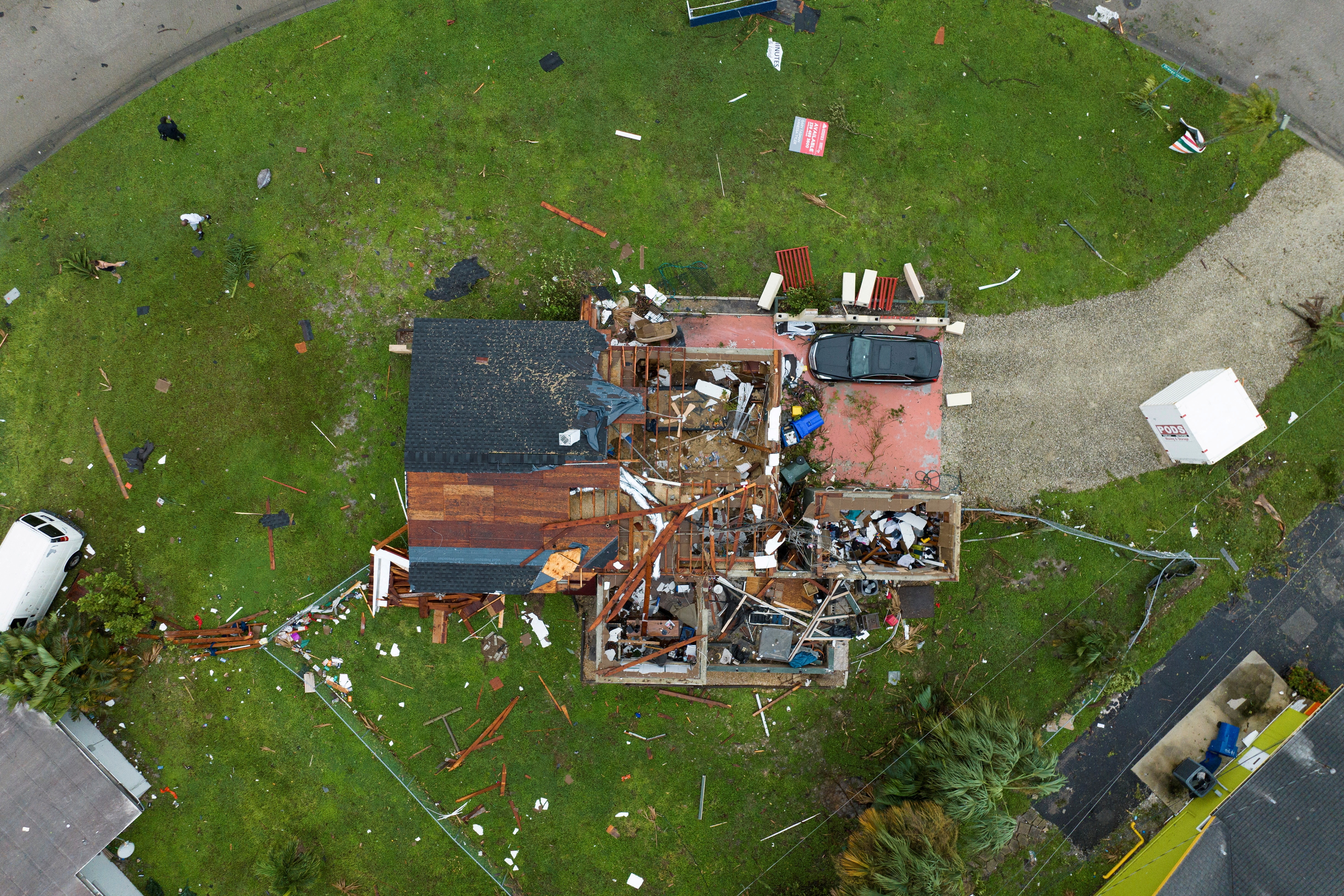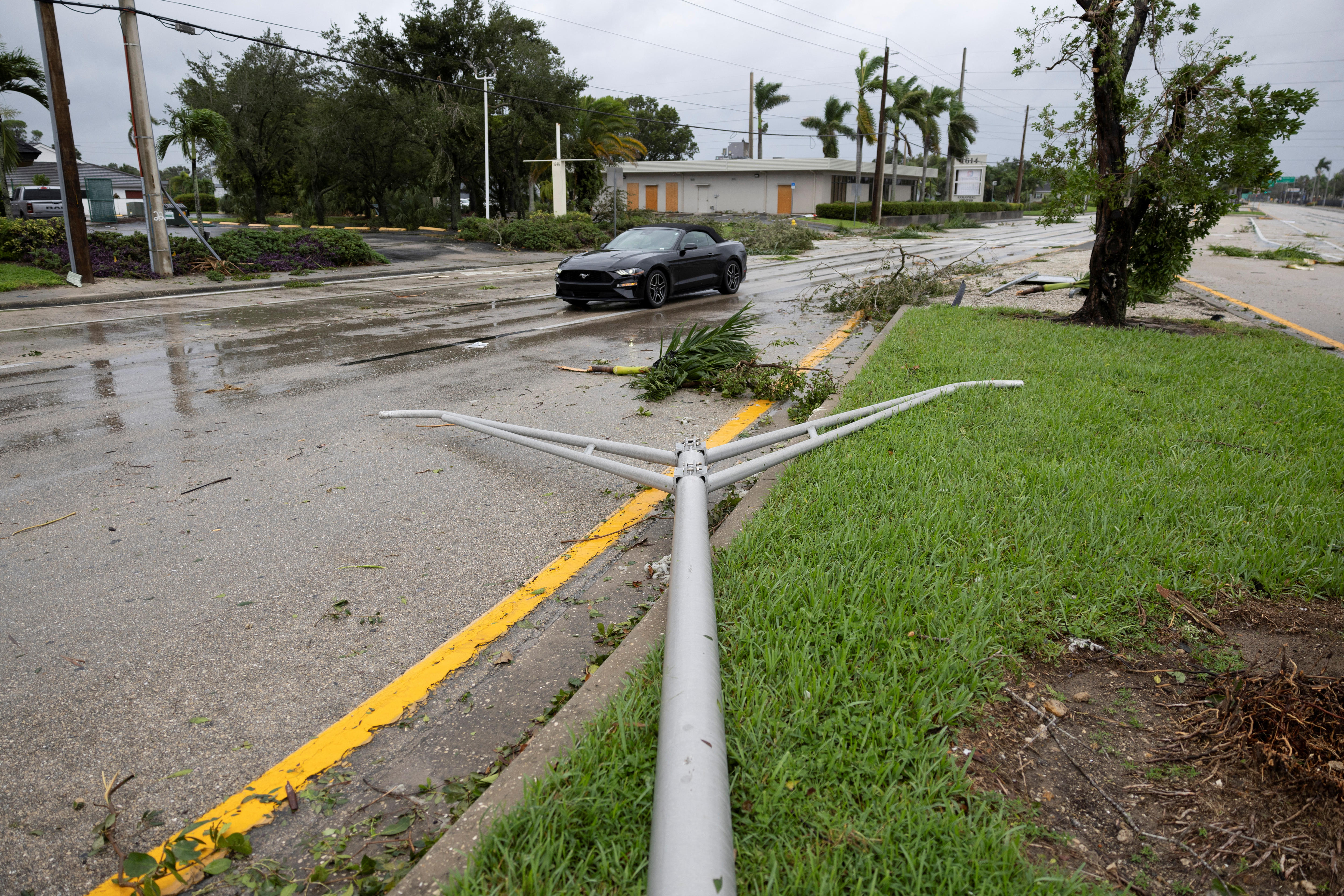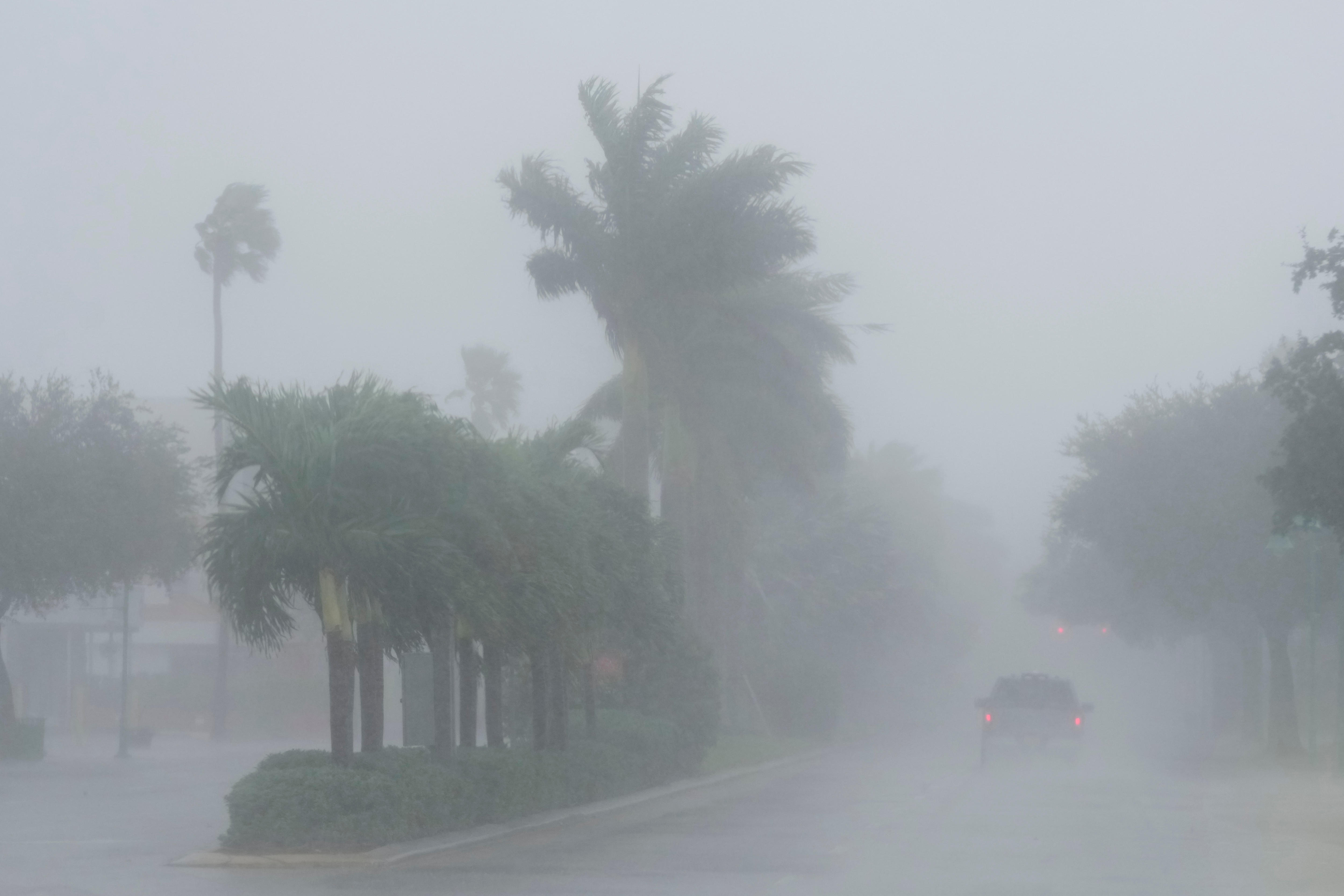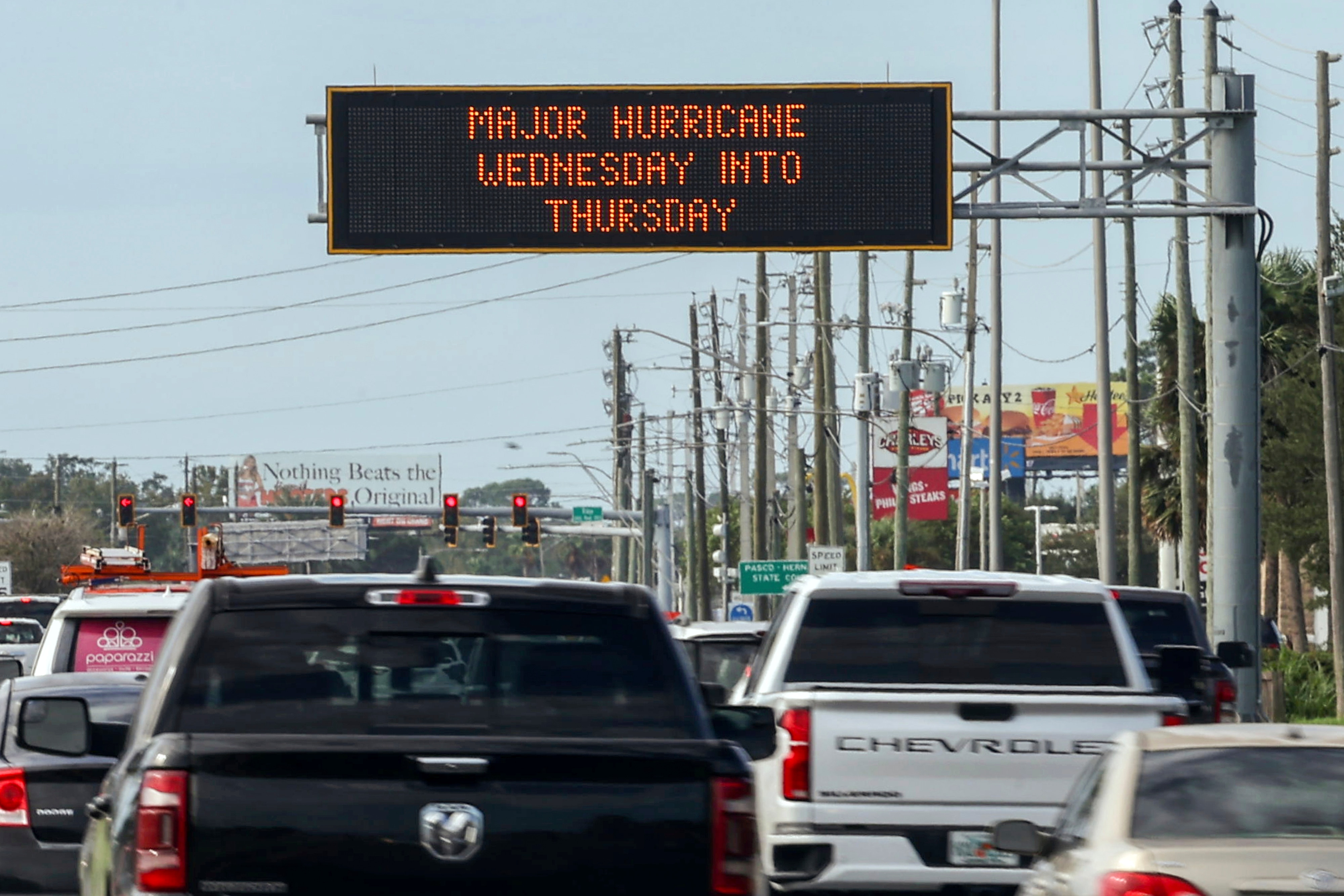What's the difference between a hurricane and a cyclone? It depends on the location of the storm
By Hanan Dervisevic
Topic:Storms

In the North Atlantic and eastern North Pacific, the term hurricane is used for a tropical cyclone.
Hurricane Milton made landfall in Florida as a category three storm, before moving back out to sea as a category one.
But what makes a storm category three and how does it differentiate from a cyclone or typhoon?
Here's a breakdown of the hurricane scale and why the location of where a storm occurs determines its name.
What's the difference between a hurricane and cyclone?
Where they formed and the direction they spin in.
Hurricanes, cyclones, and typhoons are the same weather phenomenon.
They're all horizontal, rotating, organised systems of clouds and thunderstorms that originate over tropical waters.
But they're called something different depending on where the storm originates in the world.
Here's how the US National Oceanic and Atmospheric Administration (NOAA) puts it:
- Hurricanes are tropical storms that form over the North Atlantic Ocean and Northeast Pacific Ocean
- Tropical cyclones are formed over the South Pacific and Indian Ocean
- Typhoons are formed over the Northwest Pacific Ocean
And, as the Bureau of Meteorology (BOM) points out, these storms rotate in different directions depending on what hemisphere they're in:
- Southern hemisphere: clockwise
- Northern hemisphere: anticlockwise
How are hurricanes classified?
According to wind speed.
Hurricanes are ranked on a scale officially known as the Saffir-Simpson Hurricane Wind Scale.
It is a one to five rating based on maximum sustained wind speed, which ranges from 74mph (119kph) to 157mph (252kph), or higher.
Here's a video that illustrates the differences between categories produced by MetEd, a website funded by international weather organisations including the Bureau of Meteorology (BOM):
The category rating system does not take into account potentially deadly hurricane hazards such as:
- Storm surges
- Rainfall
- River flooding
- Tornadoes
So even though a hurricane may have a lower category, it may still cause significant damage because of flooding.
In Hurricane Milton's case, although weakened over land, experts focused their concerns on the storm's:
- growing size
- potential for storm surges along populated areas.
And neither of these factored into its category rankings.
Roger Stone, Professor Emeritus in Climate Science at the University of Southern Queensland, says Hurricane Milton was so fierce because it "formed over excessively hot sea-surface temperatures in the Gulf of Mexico", similar to that of Hurricane Katrina.
Here's a look at each hurricane category according to the US National Hurricane Center:
Category one
Wind speed: 119-153kph
Damage: Some
Power outages: Last a few to several days
More detail: Well-constructed frame homes could have damage to roof, shingles, vinyl siding and gutters. Large branches of trees will snap and shallowly rooted trees may be toppled.
Category two
Wind speed: 154-177kph
Damage: Extensive
Power outages: Several days to weeks
More detail: Well-constructed frame homes could sustain major roof and siding damage. Many shallowly rooted trees will be snapped or uprooted and block numerous roads.
Category three
Wind speed: 178-208kph
Damage: Devastating
Power outages: Several days to weeks
More detail: Well-built framed homes may incur major damage or removal of roof decking and gable ends. Many trees will be snapped or uprooted, blocking numerous roads.
Category four
Wind speed: 209-251kph
Damage: Catastrophic
Power outages: Weeks to possibly months
More detail: Well-built framed homes can sustain severe damage with loss of most of the roof structure and/or some exterior walls. Most trees will be snapped or uprooted and power poles downed. Fallen trees and power poles will isolate residential areas. Most of the area will be uninhabitable for weeks or months.
Category five
Wind speed: 252kph or higher
Damage: Catastrophic
Power outages: Weeks to possibly months
More detail: A high percentage of framed homes will be destroyed, with total roof failure and wall collapse. Fallen trees and power poles will isolate residential areas. Most of the area will be uninhabitable for weeks or months.
In Australia, our tropical cyclones are also ranked in categories from one to five based on maximum mean wind speed over 10 minutes.
That's different to the Saffir-Simpson scale, which is based on maximum sustained wind speed over two minutes.
The categories also have different wind speed ranges because in the US a system does not become a hurricane until winds average 118kph — which in Australia is a high-end category two storm.
For example, a category three cyclone's maximum mean wind speed is 118-159kph.
But a category three hurricane's range is 178-208kph.
So what's a tornado then?
A tornado is a rotating column of air that extends from a cloud to touch the ground, the BOM says.
"To be classified as a tornado, the rotating column must be in contact with the ground and the parent cloud at the same time."
Tornadoes can last from less than a minute to more than an hour.
They can range in size from just a few tens of metres to more than a kilometre wide.
A tornado is also a vortex of strong wind but spawns from an individual thunderstorm, so operates on much smaller time and geographic scales.
BOM says they can be one of the "most destructive phenomena in nature" as their winds can exceed 300kph.
Can hurricanes produce tornadoes?
Yes, according to Dr Stone.
"Tornadoes can form in [what are called] pre-cursor bands that form out on the leading edge of hurricanes/tropical cyclones," he says.
"They form in regions of high convergence out in the front of the hurricane itself."
The National Weather Service confirmed at least 19 tornadoes in Florida on Wednesday (local time) as Hurricane Milton neared landfall.
But, these types of tornadoes are often weak and short-lived.

- Copy link
- X (formerly Twitter)
Related stories
'We have lost some life,' says Florida county sheriff as Hurricane Milton floods state
Topic:Storms
Photo shows Palm trees sway as a car drives during heavy rain
Millions in Florida warned homes could become coffins when Hurricane Milton hits
Topic:Storms
Photo shows Milton
Hurricane Helene death toll rises to over 120 across six south-eastern US states
Topic:Storms
Photo shows Debris is seen in the aftermath of Hurricane Helene
Related topics
Back to top By:https://www.abc.net.au/news/2024-10-10/hurricane-cyclone-difference-categories/104454684(责任编辑:admin)
下一篇:The polls in the US presidential race are neck and neck but election whisperer Dr Allan Lichtman says America has already decided
 Socceroos rescue a point
Socceroos rescue a point  Wallabies thrash Wales 52
Wallabies thrash Wales 52 Jake Paul beats Mike Tyso
Jake Paul beats Mike Tyso Live updates: England vs
Live updates: England vs  US election 2024: Donald
US election 2024: Donald  US election live: Kamala
US election live: Kamala
- ·North Korea's latest weapon agains
- ·Hezbollah says Israel 'cannot impo
- ·Inside the rise of US oligarchs and how
- ·Thailand's worst suspected serial
- ·Tabi shoes are turning heads from Holly
- ·FBI arrests Florida man planning attack
- ·Illegal immigrant gets life sentence fo
- ·Bibles, water, watches and sneakers: Do
- ·North Korea's latest weapon against
- ·Hezbollah says Israel 'cannot impose
- ·Inside the rise of US oligarchs and how i
- ·Thailand's worst suspected serial ki
- ·Tabi shoes are turning heads from Hollywo
- ·FBI arrests Florida man planning attack o
- ·Illegal immigrant gets life sentence for
- ·Bibles, water, watches and sneakers: Dona
- ·US to give Kyiv anti-personnel landmines
- ·An arrest warrant for Benjamin Netanyahu
- ·One of Vietnam's high-profile politi
- ·Shanghai Walmart Attack: A Man Randomly S
- ·South Korean police officers jailed over
- ·Cambodia publicly shames maid deported af
- ·North Korea to use all forces including n
- ·Philippines condemns China attack of Viet
- ·US adds 2 more Chinese companies to Uyghu
- ·North Korean defector steals South Korean
- ·Malaysia deports Cambodian worker for cal
- ·Rebels battle for Myanmar junta’s weste

